"Communications of the 1880's", A New Museum
by Fritz Kettenburg
Reprinted from "INSULATORS - Crown Jewels of the Wire", July 1977, page 8
The B. F. Hastings Building has been restored along with many other
dilapidated and abandoned structures left over from the Gold Rush boom years.
The original town along the banks of the Sacramento River is now a State
Historic Park, having undergone a reconstruction of the building exteriors to reflect those golden years long past, and the interiors
converted into
shops, pubs, restaurants and museums.
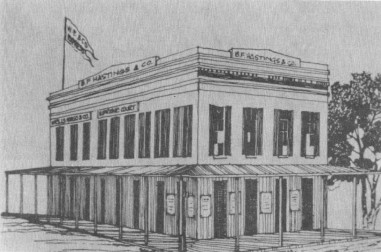
The B. F. Hastings Building was the
location of an office of the Alta Telegraph Company in 1858 and was later taken
over by the California State Telegraph Company. The first official message to be
"wired" across country over the first transcontinental telegraph
line was sent by the Chief Justice of California to President Lincoln from the
California State Telegraph office on October 24, 1861. The B. F. Hastings
Building is therefore quite an appropriate site for a communications museum, and
this is a museum that would surely interest the insulator collector--beginner or
old hand.
As this museum was an original idea and project of insulator
collectors with special interests in telegraph history research, it is no
surprise that the emphasis would be on the modes of insulation used. From
California's earliest lines are two styles of "vulcanite" threadless
"hats" made under the authority of Goodyear's 1851 patent for hard
india-rubber or "vulcanite", and a sulphur filled iron insulator
patented in 1851 by J. M. Batchelder. These insulators rate among the rarest
examples of early attempts at insulation of the telegraph wire.
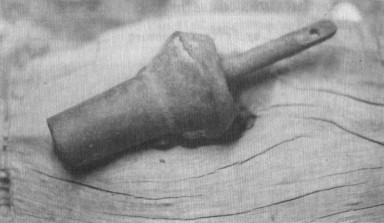
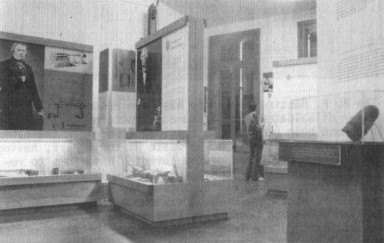
There is a
Farmer-Batchelder 1858 patent iron hook which was embedded in
"vulcanite" and screwed into a wood block, and a beautiful wood
shielded Wade displayed on a wire stand leaning slightly backwards, with a small
mirror lying flat underneath so the glass insert can readily be seen.
After the Wade we come to a threadless U.S. Tel. Co. insulator and the story
of the ill-fated opposition line. On we go to early threaded insulators:
EC&M Co S.F., Brookfields and Cal. Elec. Works. Along with all the
insulators are displayed the construction methods of the early lines, such as:
poles, crossarms, brackets, pins, wire, wire ties and splices.
I won't try to describe everything I saw, least of all the Seiler
Telephone. You will have to see the museum yourselves. Everything about the
museum is professionally well done. The display cases and methods of display
show a touch of genius. The historical information backing up displays is
expertly researched and accurate. So much is packed into this small museum, that
after looking at the photographs taken, I realized I had missed a few things.
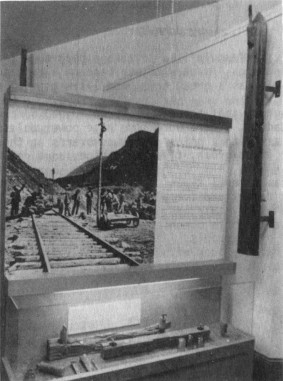
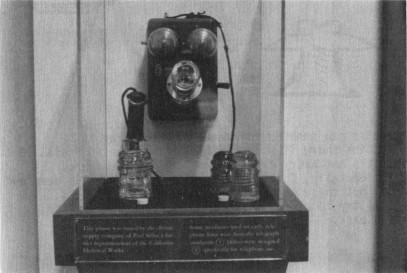
Plan to spend some time in the in B. F. Hastings Building in Old Sacramento,
California, this summer. The museum is next door to Wells Fargo and will be open
from 10 to 5 Monday through Saturday during the summer.
| 